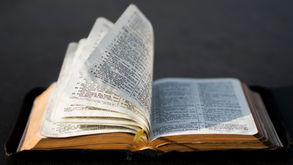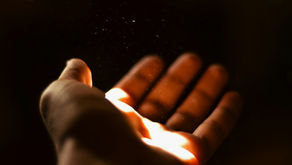Jean-Baptiste Louis Bourgeois - Designer of Mashriqu'l-Adhkar at Wilmette
- Uplifting Words

- Feb 20, 2020
- 4 min read
By R. Jackson Armstrong-Ingram

Early Life of Jean-Baptiste Louis Bourgeois
Jean-Baptiste Louis Bourgeois was born on the family farm near St.Celestin, Quebec, Canada, on March 19, 1856. According to family sources,he showed an interest in drawing from early childhood. As a youth, he worked first in a grocery store and then for a local firm of church builders. He married Marie Gronville in 1877, and they had three children. His wife died around 1880, and Bourgeois then moved to Montreal to work with his cousin Louis-Philippe Hebert, an apprentice sculptor in the studio of Napoleon Bourassa. On the recommendation of Bourassa, a relative sponsored the two cousins on a study trip to Paris. Hebert returned to Montreal, where he continued his career as a sculptor, but Bourgeois is said to have disappeared from Paris, his family only knowing of him through brief communications from such places as Italy, Greece, Egypt, and Persia. These messages stopped before long, and his family had no further contact with him until the 1920s, when he reestablished communications for the last few years of his live.
Career of Jean-Baptiste Louis Bourgeois
Wherever he may have traveled in Europe or the Middle East for a year or two, Bourgeois arrived in Chicago, Illinois, United States of America, in 1883. At first, he worked as an assistant designer in the offices of various well-known Chicago architectural firms including those of William Jenny, Burnham and Root, and Holabird and Roche. In 1886, he went into partnership with Ostling. Together they worked on designs for houses and apartments, two churches, and an hotel. After Ostling retired, Bourgeois continued in business by himself designing more houses in Chicago and a few buildings in Iowa, and Omaha, Nebraska. Bourgeois then worked in Chicago again for Jules de Horvath. In the early 1890s, Bourgeois was contracted by Mike de Young to work on buildings for the California Midwinter International Exposition in Golden Gate Park in San Francisco. This exposition opened in 1894. Its buildings show the interest that had been current for some years in California in "Moorish" decoration combined with influences from the Sullivanesque school which had been developing in Chicago during Bourgeois' time there. After completing his contract in San Francisco, Bourgeois moved to Los Angeles, California, where he designed residences and commercial buildings. He also worked on the design for the house of the well-known painter of flowers, Paul deLongpre. Bourgeois married deLongpre's daughter, Alice, in New York in 1901, and for the following seven years he worked as head designer for a New York firm. Thereafter he worked freelance in New York and the Northeast United States, except for a two-and-a-half year period of employment with another firm. After the choice of his design for the Mashriqu'l-Adhkar in 1920, Bourgeois moved first to Chicago and subsequently to the suburb of Wilmette. Apart from his continued work on the Mashriqu'1-Adhkar, he designed a studio for himself and a caretaker's house adjacent to the Mashriqu'l-Adhkar site. He also designed a house in nearby Glencoe, and submitted a joint design with two others for the Tribune Building competition in Chicago which received an honorable mention.

In 1905, Bourgeois submitted a design for the League of Nations Peace Palace competition at The Hague which he had produced with Paul Blumenstein. Alice Bourgeois had also worked on the presentation drawings. The main part of this design was for an eight-sided building. In the early 1900s, Bourgeois and his wife had come into association with the Baha'i Faith through Marie Watson and Mary Hanford Ford. He later came to know Roy Wilhelm for whom he designed a house in 1908. In 1907, Wilhelm was going to visit 'Abdu'l-Baha and Bourgeois asked him to take with him a copy of the Peace Palace design along with a photograph of some ornament from the deLongpre house. According to Wilhelm, 'Abdu'l-Baha's only comment on the items was that the Baha'i Temple should have nine sides. Bourgeois reworked the design and submitted it to the newly formed Baha'i Temple Unity Executive Board in 1909 when that body was reviewing designs by a number of people. He thoroughly revised this design in 1917-18, and during this period built a plaster model of it with the assistance of several artist friends including the sculptor J. A. Meliodon, Alice Bourgeois' uncle. This model was viewed by numbers of people between 1918 and its exhibition at the Baha'i Temple Unity Convention in New York in 1920 at which time it was chosen as the basic design for the proposed Mashriqu'l-Adhkar in Wilmette. After the selection of his design in 1920, Bourgeois continued to refine it, in part because of the changed proportions required by scaling down the design to fit the site. He reworked the designs for the exterior in a loft borrowed from Holabird and Roche in the downtown Loop district of Chicago in the early 1920s, and later completed his interior designs in his studio in Wilmette in 1928. Bourgeois' final design envisioned an exterior which shaded from granite-gray steps to a pure white dome and featured elaborate cast-bronze window grills and entrance doors. His final interior design called for an intricately patterned inlaid floor, marble skirtings, pietra-dura wall panels, and high-relief stucco ceilings pierced by shallow stained glass domes in the bays around the first floor. The rotunda was to rise upward in tiers of elaborate cast-glass arches alternating with mosaic panels and filled with gilded, cast-bronze grills to a soaring dome of colored Tiffany glass. Bourgeois died in August 1930, leaving a large body of drawings some of which were used as the basis for the completion of the Wilmette building during the following decades. The erection of the exterior proceeded under the supervision of Allen McDaniel and the interior is principally the work of Alfred Shaw. Although having a remarkable facility for pencil drawing, Bourgeois was not a trained architect in the modern sense. (Formal professional education for architects only developed in the United States when Bourgeois was already in his middle years.) He was primarily a designer who had an extraordinary ability to draw ornament with pencil. He could not draw with pen and ink, nor could he paint. The well-known colored perspectives of his Wilmette design that circulated in the 1920s and later are by artists who were hired to paint them from Bourgeois' drawings. The level of Bourgeois' skill and his intentions are best appreciated from his many superbly handled drawings of ornamental detail.




















